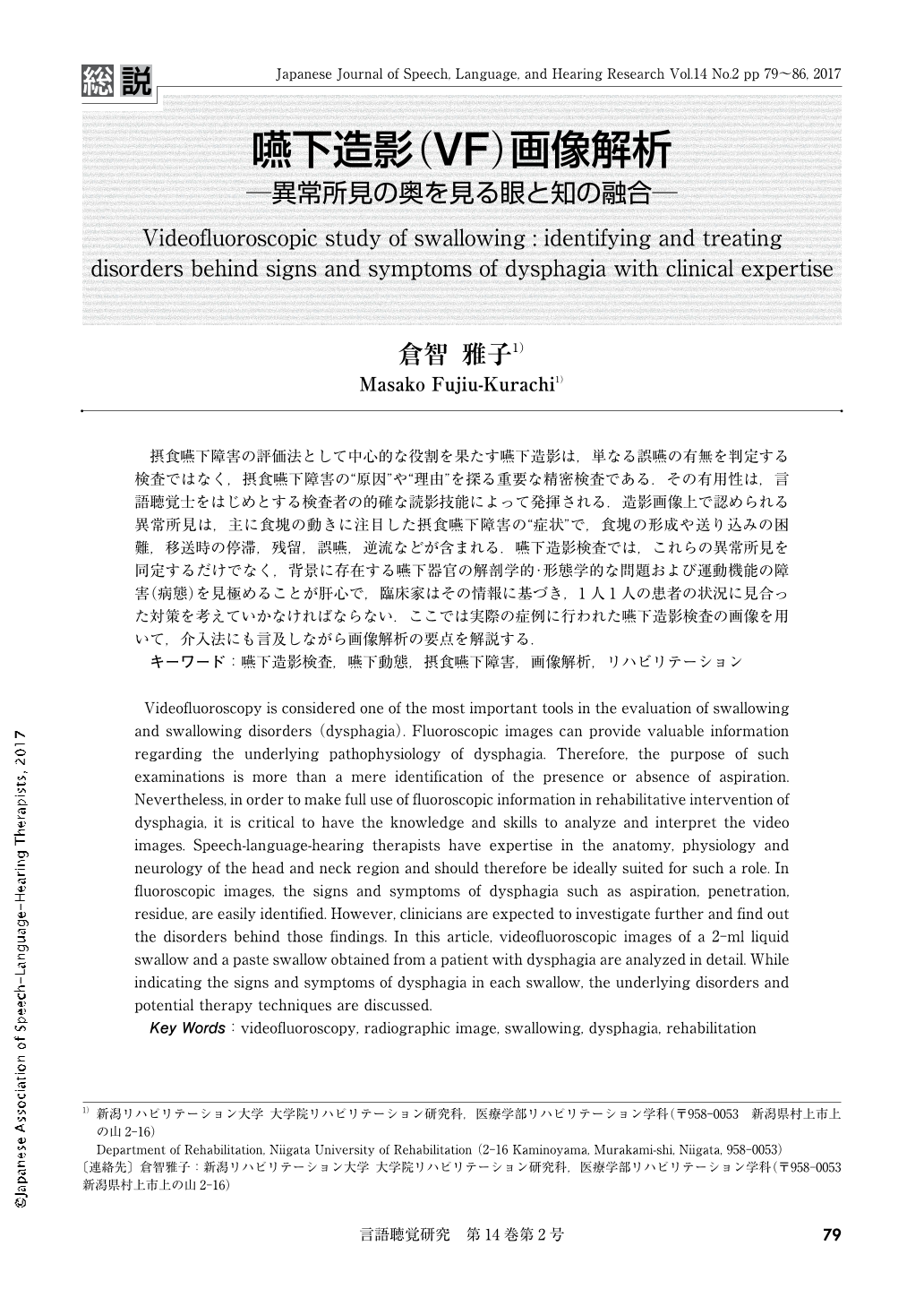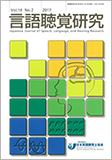Japanese
English
- 有料閲覧
- Abstract 文献概要
- 1ページ目 Look Inside
- 参考文献 Reference
摂食嚥下障害の評価法として中心的な役割を果たす嚥下造影は,単なる誤嚥の有無を判定する検査ではなく,摂食嚥下障害の“原因”や“理由”を探る重要な精密検査である.その有用性は,言語聴覚士をはじめとする検査者の的確な読影技能によって発揮される.造影画像上で認められる異常所見は,主に食塊の動きに注目した摂食嚥下障害の“症状”で,食塊の形成や送り込みの困難,移送時の停滞,残留,誤嚥,逆流などが含まれる.嚥下造影検査では,これらの異常所見を同定するだけでなく,背景に存在する嚥下器官の解剖学的・形態学的な問題および運動機能の障害(病態)を見極めることが肝心で,臨床家はその情報に基づき,1人1人の患者の状況に見合った対策を考えていかなければならない.ここでは実際の症例に行われた嚥下造影検査の画像を用いて,介入法にも言及しながら画像解析の要点を解説する.
Videofluoroscopy is considered one of the most important tools in the evaluation of swallowing and swallowing disorders (dysphagia). Fluoroscopic images can provide valuable information regarding the underlying pathophysiology of dysphagia. Therefore, the purpose of such examinations is more than a mere identification of the presence or absence of aspiration. Nevertheless, in order to make full use of fluoroscopic information in rehabilitative intervention of dysphagia, it is critical to have the knowledge and skills to analyze and interpret the video images. Speech-language-hearing therapists have expertise in the anatomy, physiology and neurology of the head and neck region and should therefore be ideally suited for such a role. In fluoroscopic images, the signs and symptoms of dysphagia such as aspiration, penetration, residue, are easily identified. However, clinicians are expected to investigate further and find out the disorders behind those findings. In this article, videofluoroscopic images of a 2-ml liquid swallow and a paste swallow obtained from a patient with dysphagia are analyzed in detail. While indicating the signs and symptoms of dysphagia in each swallow, the underlying disorders and potential therapy techniques are discussed.

Copyright © 2017, Japanese Association of Speech-Language-Hearing Therapists. All rights reserved.


